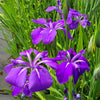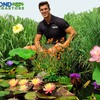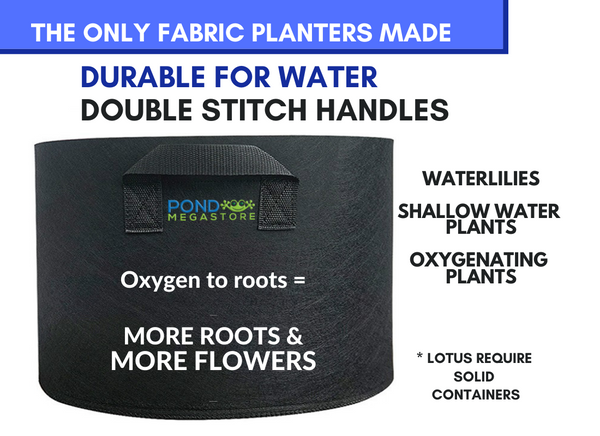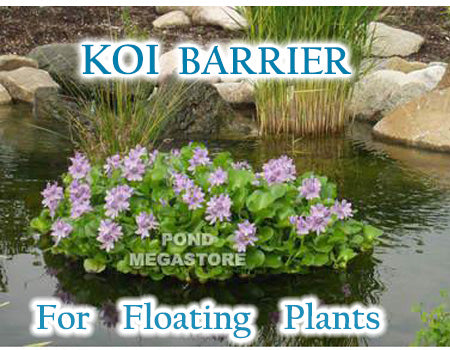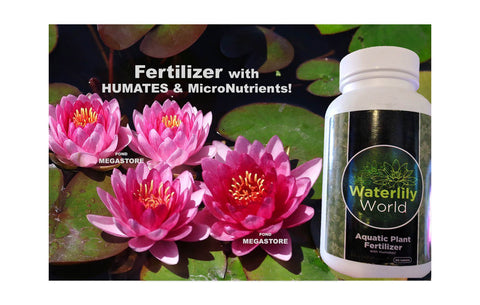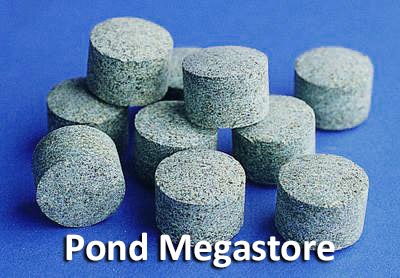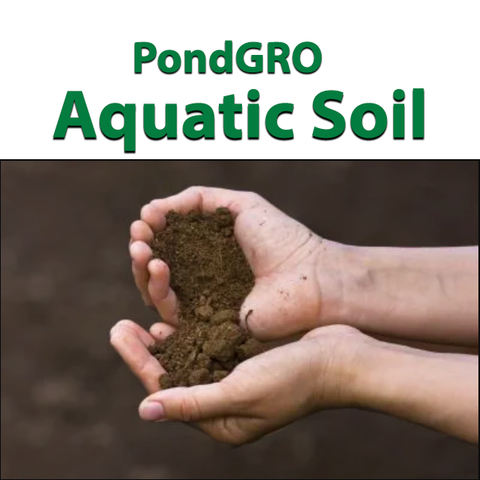PondGro Fabric Containers — Made for Underwater Success
Pond Plant & Water Lily Fabric Containers You’ll Actually Love (and Your Pond Will Thank You)
The PondGro line is the only fabric planting container series engineered specifically for underwater, aquatic use — with breathable walls, adjustable rims, and rugged handles. Your waterlilies, marginal plants, and submerged oxygenators deserve a container that helps them thrive, not one that holds them back.
These pots:
-
Deliver oxygen right to the roots
-
Prevent circling or “root-bound” problems
-
Keep soil in place (no silt drifting)
-
Protect hands, fish, and pond critters from sharp plastic shards
-
Fold, roll, and adjust to match your shelf depth
Think of plastic as the dull kitchen knife — serviceable, but not ideal — and fabric as the scalpel, finely tuned for aquatic precision.
Pick the right size, roll down for shallow shelves, lift via handles gently, let roots colonize, bloom prolifically — and enjoy a clearer, healthier pond.
Why Fabric Containers Are the Smarter Choice (Especially for Waterlilies)
Let’s cut through the hype and look at what plant science tells us.
1. Oxygen at the Root Zone = Growth Power
-
All plants (yes, even aquatic ones) require oxygen in the root zone for respiration, nutrient uptake, and cell health. Water Lily blooming is increased greatly with proper size fabric pots versus solid containers.
-
Solid plastic containers block oxygen diffusion. That means roots deep in the media get starved, slowing growth or inviting root rot.
-
Fabric containers are porous. Water and gases move in and out, allowing oxygen from the pond to reach the roots.
-
In horticulture, breathable or “root-pruning” pots are known to stimulate dense, fibrous branching root systems (versus tangled masses) because roots reaching the boundary are air-pruned rather than curling inward.
This means better nutrient use, stronger health, and ultimately more blooms and vigor.
2. Root Pruning Prevents Root-Binding
-
In rigid pots, roots often hit the wall and circle, ending up roped and inefficient.
-
In fabric, when root tips hit air or boundary zones, they cease elongation and branch inward. You get many feeder roots instead of one big coil.
-
This naturally pruned architecture is more efficient at absorbing water, nutrients, and oxygen.
3. Cleaner Water, Less Mess
-
Plastic baskets or cracked rigid containers sometimes leak soil particles or fine media, clouding the pond or causing filter load.
-
Fabric containers hold soil firmly in place while still allowing water flow. The result: clearer water, less “fuzz” drifting, and less stress on filtration.
4. Safety, Longevity, and Environmental Edge
-
Plastic becomes brittle, cracks, can expose sharp edges — not great when you, fish, or kids reach in. Fabric pots are soft, flexible, and safer to handle.
-
Some plastics can leach chemicals (BPA, phthalates, etc.) over time, especially under UV and wet cycles. High-quality geotextile fabrics are inert and stable in aquatic settings.
-
Fabric pots fold flat, are lightweight, and reduce shipping cost and bulk. They’re more freight-efficient and lower your carbon footprint per unit.
Bottom line: For underwater planting (with the exception of lotus and true common cattails — see below), fabric containers offer better oxygen dynamics, root health, cleaner water, and safer handling.
Introducing PondGro Fabric Containers
Features & Benefits (Explained Simply)
-
Double-stitched handles (on all but the two smallest sizes): Two or more people can carry and lower large or specimen pots gently and safely.
-
Adjustable height / roll-down sides: If your pond shelf is shallow, just roll or fold down the side to fit — no need for multiple fixed-height pots.
-
Specially designed for aquatic use: Not your ordinary garden fabric pot — built to resist submersion stresses, UV, mold, and constant moisture.
-
Durable geotextile construction & reinforced seams: Long-lasting performance in pond environments.
-
Soil containment with oxygen access: Soil stays put while water and gas move freely.
-
Better than baskets: No brittle edges to crack, no soil washout, and stable against tipping (when properly weighted).
Sizing & Matching Pots to Plants
(You can turn this into a PDF/graphic or include on the page.)
| PondGro Size | Approx Dimensions | Best Use / Ideal Plants | Notes / Bloom Benefit |
|---|---|---|---|
| Small | ~9″ across × 5″ deep | Submerged oxygenators, tropical waterlilies, groundcover plants (≤ 18″ tall) | Low profile, perfect for shallow shelves |
| Medium | ~10″ across × 12″ deep | Small & medium hardy waterlilies, many marginals (up to ~4 ft tall), large submerged patches | Great general-purpose pot |
| Large (wide & shallow) | ~15″ across × ~5.5″ deep | Large hardy waterlilies with a lateral growth habit | These bloom best when given lateral expansion room |
| Super (specimen size) | ~24″ across | Specimen waterlilies, multiple lilies in one pot, or a mini Victoria | Has four handles, so two people can carry |
Weight & Stability Tip
Your pot (with soil and root ballast) must be heavy enough to resist tipping or floating. A good rule of thumb: let your container weight (with soil) be ~25–30% of the mature shelf plant’s height.
For example, a thalia delbata that reaches 48″ (4 ft) should go into at least a 12″ deep pot (plus soil) so the total mass anchors it in wind or wave action.
Exception: Lotus & Cattails
For lotus or true cattails, we do not recommend fabric containers. Their aggressive rhizome growth demands a solid, impermeable container. For virtually all other aquatic and marginal plants, fabric is the smarter choice.
Waterlily Examples: What Your Customers Might Plant (and Why Fabric Helps Them Bloom More)
To give real-world context, here are a few waterlily names that are known to perform well (via breeding trials, hobbyist experience, or university trials) — and how fabric pots support their success:
-
‘Razzberry’ (hardy waterlily) — often selected for vigor and repeat bloom under good substrate and root oxygen conditions.
-
‘Ring of Fire’ (hardy waterlily) — known in many plant trials for producing multiple flushes when grown in optimal conditions.
-
A tropical hybrid like Nymphaea ‘Teri Dunn’ (or equivalent) — tropical hybrids are more demanding of root health and oxygen, so a breathable container gives them a better shot at consistent flowering.
In university or formal trials, waterlilies grown in well-aerated substrates consistently outperform those constrained in non-porous containers, showing higher flower counts and longer bloom periods. (While specific cultivar names are rarely published in research, the principle holds across trials.)
Because our fabric containers help supply oxygen, reduce root stress, and prevent root-binding, these kinds of lilies can deliver more consistent blooms in your customers’ ponds.
How to Plant in a PondGro Fabric Container
(Plain, step-by-step)
-
Unfold the fabric pot and set it on a flat surface.
-
Fill it halfway with a heavy sandy loam or aquatic planting mix.
-
Position your plant so the crown (where leaves emerge) is at the ideal height (often near rim).
-
Add soil around roots, gently pressing to remove air pockets.
-
Optionally insert fertilizer tabs at base or side.
-
Roll down rim if your pond shelf is shallow.
-
Carefully lower the pot by its handles into your pond, placing it on ledges, risers, or bottom.
-
Let pond water soak into the media, helping it settle and “lock in” soil.
-
Over time, roots will grow through the fabric, anchoring further and gaining oxygen access.
FAQs: Answering Skeptics & Questions
Q: Will the fabric rot, tear, or degrade underwater over time?
A: High-quality geotextile fabrics are engineered for durability in wet, UV, and flex conditions. They resist tearing, mold, and UV damage. While nothing lasts forever, a fabric pot is far less likely to crack and injure your pond than brittle plastic.
Q: Don’t fabric pots dry out too fast when on land?
A: Out-of-water, fabric is more breathable — yes, it can lose moisture. But underwater, the pond provides constant moisture via diffusion. The breathable walls allow vapor exchange without losing soil.
Q: What about deep, aggressive rooters?
A: Most waterlilies, marginals, and submerged species do excellent in fabric. The exceptions are lotus and some cattails with prolific rhizomes — those require a solid, non-perforated container.
Q: How do I clean or reuse these pots?
A: At season’s end or when re-potting, rinse off soil and root debris with gentle water flow. Avoid sharp tools. Inspect seams and fabric — many pots can be reused several seasons if cared for.


